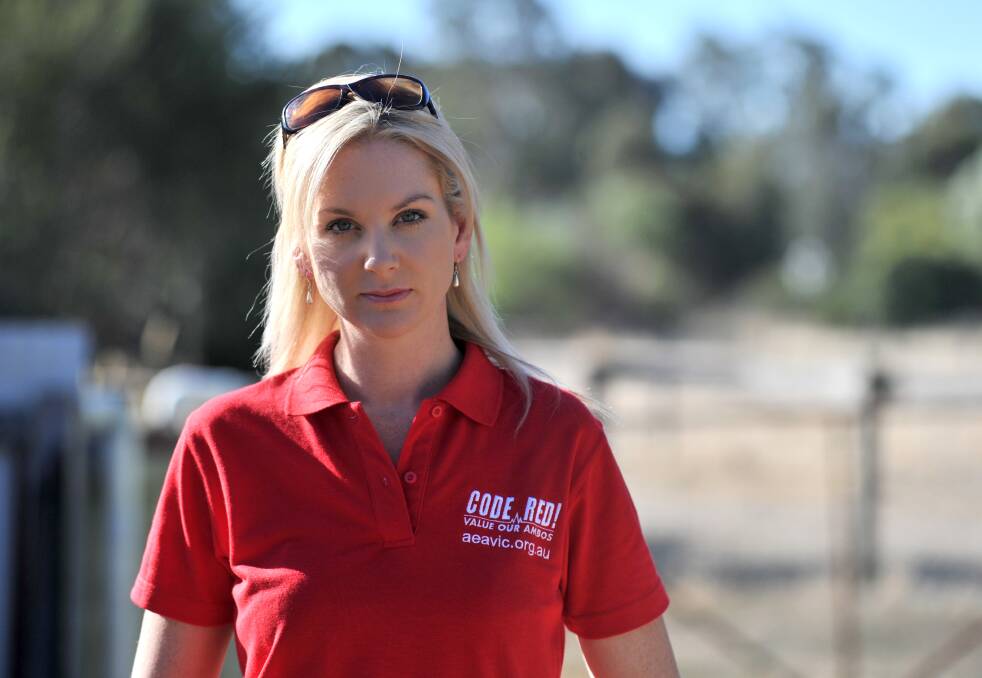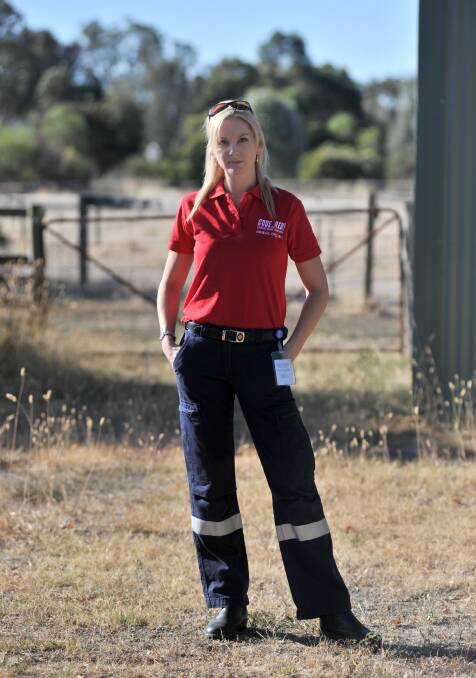Subscribe now for unlimited access.
or signup to continue reading
A BAGSHOT MICA paramedic has told of working frantic 14-hour days in last week's heatwave, including finding an 86-year-old woman who later died after waiting more than two hours for an ambulance.
Paramedics say Victoria’s ambulance service 'melted down' in last week’s heatwave, causing unacceptable delays for patients.
In a rare interview agreed to while the union takes protected industrial action, Bagshot MICA paramedic Anna Sutton said the service scrambled to care for the thousands of patients who needed treatment.
She worked frantic 14-hour shifts alone in Melbourne with little to no back up from ambulances, which usually occurs for single responder MICA paramedics.
‘‘On Thursday, I remember thinking I have never heard it this desperate. I was going to cases 30 kilometres away or more on my own and then being turned around to go to something else that was more urgent that no one could respond to,'' she said.
''I could hear paramedics calling for help. It was real last ditch stuff. Generally they can scrounge a crew from somewhere, but that night, they just couldn’t.’’
Despite working through Black Saturday, Ms Sutton said Thursday was the busiest day of her 10-year-career.
‘‘I wouldn’t think I was the only one who went to a patient who slipped through the cracks,’’ she said.
As Ambulance Victoria responded to more than 2500 of calls for help on Friday, an 86-year-old woman who collapsed in her Williamstown home around 5.30pm waited two hours and one minute for an ambulance.
Ms Sutton said she was concerned about the woman’s wait after she found her unconscious and an in an ‘‘extremely critical’’ state on route to hospital with an undetectable blood pressure.
The woman had a temperature of 40 degrees and died in hospital on Saturday night.
‘‘When you see cases like that, it’s really hard to accept that there might have been a better outcome if we had’ve been there earlier,’’ she said.
The woman’s son said on Wednesday that although the ambulance service maintained contact with the family over the two hours to check on her condition, he wondered whether she waited too long for care.
‘‘Was there a chance within that two hours?’’ he said.
‘‘We’re not critical of the ambulance service, they were probably trying to do the best they can but it’s just too long.’’
Ms Sutton said the woman appeared to have been initially deemed an urgent 'lights and sirens' case who should have been reached within 15 minutes, but was later downgraded to a 'priority 2' case, meaning she should have been seen within 20 minutes. However, because of record high demand, the response time was delayed.
‘‘They weren’t very hopeful of her chances when we got her to hospital,’’ Ms Sutton said.
The paramedics union, which is trying to negotiate better pay and conditions with the Napthine Government, said the case was one of several that highlighted how ill equipped the service was to meet extreme demand last week.
‘‘Even during relatively quiet times, Victoria’s ambulance service is woefully inadequate. However last week, the system went into meltdown,’’ said Ambulance Employees Australia Victorian secretary Steve McGhie.
The union said in a sign of how overloaded Victoria’s emergency health care system had become, one elderly woman was left waiting on a trolley with a paramedic for nine hours in an emergency department last week because hospital staff were too busy to care for her.
This was despite the government’s new policy of hospitals taking immediate responsibility for patients arriving by ambulance to free paramedics up for new cases.
Ambulance Victoria general manager of regional services Tony Walker would not comment on individual cases raised by the union.
‘‘We are reviewing the cases that have been raised and will make ourselves available to meet with patients and families to discuss our response,’’ he said.
Mr Walker disputed claims the service had not coped and said AV provided an ‘‘exceptional response to an unprecedented demand for services during last week’s heatwave’’.
‘‘During this high demand, we focused ambulances on the sickest patients based on the information provided at the time of call. Where delays occurred, we called patients back to check on their welfare and condition and upgraded our responses where that had changed,’’ he said.
There was a record 2553 triple zero calls for ambulance on Friday.
This followed Thursday’s total of 2506 ambulance triple zero calls, the second highest number of ambulance calls ever answered by ESTA.
Between Monday and Saturday, paramedics were called to 208 suspected cardiac arrests, including 77 calls on Friday when it would usually receive about 12 in a day. At one stage cardiac arrest calls were coming through on average every six minutes.
‘‘We rostered extra paramedics, ambulances and managers on these days to boost our response capability. They were supported by extra paramedics in our dispatch and call referral centres, rosters, fleet and logistics, and our Ambulance Emergency Operations Centre, which operated at the second highest level of response under the State Health Emergency Response Plan,’’ Mr Walker said.



